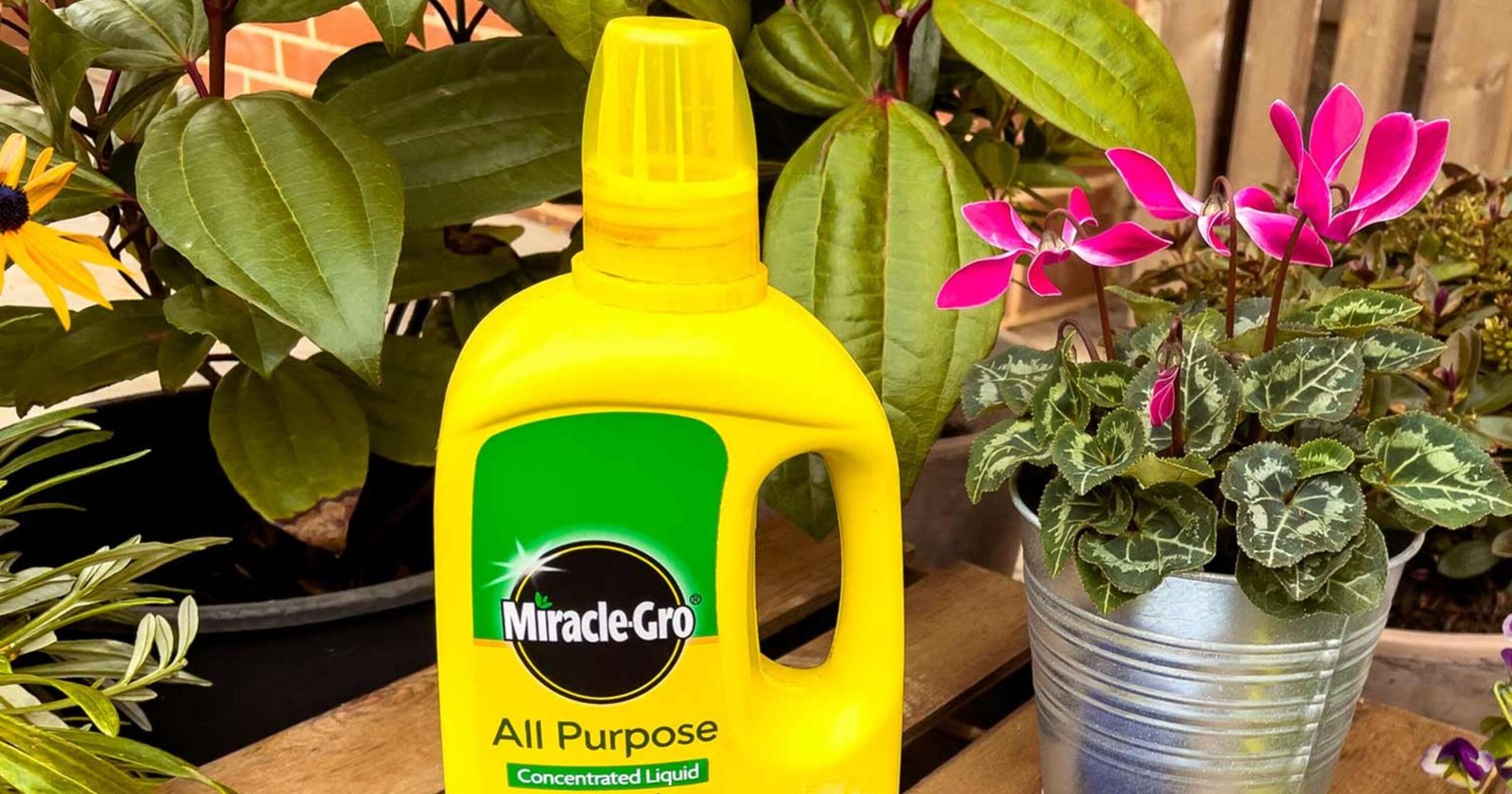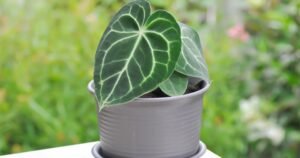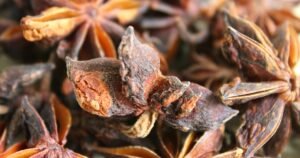Miracle-Gro, a well-known brand of plant fertilizer, is a popular choice among gardeners and enthusiasts for promoting healthy plant growth and vibrant blooms.
If the color of your plant’s leaves is delicate but becoming misshapen or distorted, it’s advisable to discontinue using Miracle-Gro.
Leaf deformation is a typical result of excessive Miracle-Gro application, and weakened plants, whether the stems or roots, can indicate fertilizer overdose.
However, like any fertilizer, there’s a fine line between providing essential nutrients for plants and overfeeding, which can harm plants.
In this discussion, we will explore the effects of using Miracle-Gro in excess, the potential risks involved, and how to use it appropriately to ensure the optimal growth of your plants.

Understanding Can You Overfeed Plants with Miracle-Grow
- Understanding Miracle-Gro:
Miracle-Gro is a synthetic fertilizer that is water-soluble and rich in essential plant nutrients. It contains a mix of nitrogen, phosphorus, and potassium, often called NPK, which are vital for plant growth and development. Nitrogen promotes leaf and stem growth, phosphorus is crucial for root development and flowering, while potassium aids in overall plant health and disease resistance. Understanding the composition of Miracle-Gro is the first step to using it effectively and avoiding the pitfalls of overfertilization.- Composition: Miracle-Gro is a water-soluble fertilizer that typically contains essential plant nutrients such as nitrogen (N), phosphorus (P), and potassium (K), along with other micronutrients.
- Purpose: Its primary purpose is to provide plants with essential nutrients for healthy growth, better flowering, and improved plant health.
- Concentration and Dilution: Miracle-Gro must be appropriately diluted before application, as undiluted can harm plant health.
- The Importance of Proper Fertilizer Use:
Proper use of fertilizers like Miracle-Gro balances the plant’s nutrient intake. Overfertilizing, or feeding plants with excessively high concentrations of nutrients, can lead to a condition known as “fertilizer burn.” This condition can cause plant leaves to become scorched, eventually wilting and dying off the plants. Therefore, understanding how to correctly apply Miracle-Gro, including the ideal dilution and frequency of application, is paramount in ensuring that your plants flourish while preventing potential damage.- Nutrient Requirements: Plants require a balanced supply of nutrients to grow optimally, including macronutrients (nitrogen, phosphorus, potassium) and micronutrients (iron, zinc, etc.).
- Overfeeding vs. Underfeeding: Overfeeding can lead to excessive growth, burning of roots, and overall stress on the plant, while underfeeding can result in stunted growth and nutrient deficiencies.
- The Risks of Overfeeding Plants with Miracle-Gro:
Overfeeding plants with Miracle-Gro poses several risks. Chief among these risks is the threat of “fertilizer burn.” This condition occurs when the salts in the fertilizer build up in the soil, creating a harsh environment that can burn the plant’s roots and hinder its ability to absorb water. Excess nutrients like nitrogen can also lead to excessive and rapid growth, making weak, leggy plants more susceptible to pests and diseases. Understanding these risks can help you use Miracle-Gro judiciously, ensuring your plants receive the nutrients they need without the negative impacts of overfertilization.- Root Burn: Excessive fertilizer can cause root burn, a condition where the plant’s roots are damaged due to the high salt concentration in the fertilizer.
- Nutrient Toxicity: Overdosing plants with Miracle-Gro can result in an accumulation of nutrients in the soil, reaching toxic levels for the plant, causing growth abnormalities and leaf discoloration.
- Environmental Impact: Overusing fertilizers can lead to nutrient runoff into water bodies, causing pollution and detrimental effects on aquatic life.
- Signs of Overfeeding Plants:
- Leaf Browning or Curling: Excessive fertilizer can cause the tips or edges of the leaves to turn brown or curl due to nutrient burn.
- Wilting: Overfertilized plants might show signs of wilting, as the roots cannot absorb water effectively due to root damage.
- Stunted Growth: Paradoxically, overfeeding can also lead to stunted growth, as the excess nutrients may hinder overall plant development.How to Properly Use Miracle-Gro:
- Follow Instructions: Read and follow the instructions on the Miracle-Gro packaging regarding proper dilution and application rates.
- Regular Monitoring: Regularly monitor the plants for any signs of nutrient deficiency or excess and adjust the fertilizer application accordingly.
- Proper Timing: Apply the fertilizer at the appropriate time during the plant’s growth cycle, considering factors like the plant’s type, stage of growth, and environmental conditions.

Best Practices for Fertilizer Application
When applying fertilizer like Miracle-Gro, several best practices can ensure that your plants get the right amount of nutrients without the risk of overfeeding. These practices include understanding your plant’s specific nutrient requirements, adhering to the recommended dosage, using the fertilizer at the right time, and ensuring proper application methods. These strategies are critical to fostering healthy and robust plant growth while mitigating potential damage from overfertilization. Let’s delve deeper into these best practices and understand how to implement them.
- Measure and Mix Correctly: Use measuring tools to ensure accurate measurement and mix the fertilizer properly with water as per the recommended ratio.
- Apply Evenly: Apply the diluted fertilizer evenly to the soil around the plants to ensure that the nutrients are distributed uniformly.
- Avoid Foliar Overdose: Avoid spraying the foliage with undiluted fertilizer, as this can cause damage to the leaves.
Seeking Professional Advice
In some cases, especially when dealing with rare plant species, complex gardening scenarios, or persistent difficulties with plant health, it might be advisable to seek professional advice. Gardening professionals or plant health experts can provide tailored advice and strategies based on their extensive knowledge and experience. They can help diagnose complicated plant health issues, suggest appropriate types and amounts of fertilizer, and guide overall garden management. So, feel free to contact a professional if you’re facing issues with your plants that you can’t resolve alone. They can offer the help you need to nurture your plants back to health.
- Consult a Horticulturist: If you need clarification on using Miracle-Gro or any other fertilizer, consider consulting a horticulturist or a gardening expert for guidance and advice.
- Soil Testing: Conduct soil tests periodically to understand the nutrient composition of the soil and adjust fertilizer use accordingly
Balanced Approach: Fertilizers like Miracle-Gro can be highly beneficial when used in the correct amounts and according to the plant’s needs. Maintaining a balanced approach and understanding the signs of overfeeding is crucial to ensure the well-being and growth of your plants.
Responsible Gardening: Being a responsible gardener involves nourishing your plants, being mindful of the environmental impact of fertilizer use, and employing best practices for sustainable gardening.
Conclusion
Can You Overfeed Plants with Miracle-Grow? In summary, while Miracle-Gro is an effective tool for promoting plant growth, responsible and informed usage is critical to preventing overfeeding and potential harm to your plants. Understanding the composition, risks of overuse, signs of overfeeding, and appropriate application methods will empower you to nurture your plants effectively and achieve a thriving garden.
FAQs
Can plants get too much Miracle Grow?
Yes, plants can get too much Miracle-Gro. Over-fertilization can lead to ‘root burn,’ nutrient toxicity, and detrimental environmental impacts due to runoff.
Symptoms of overfeeding include leaf browning or curling, wilting, and stunted growth.
It’s crucial to follow the instructions on the Miracle-Gro packaging to avoid these issues and maintain a thriving garden.
How often should I feed with Miracle Grow?
The frequency of feeding with Miracle-Gro depends on the type of plant and its growth stage. However, a general rule is to feed outdoor plants every 7-14 days and indoor plants every 2-4 weeks. Always follow the instructions provided on the packaging to ensure optimal plant health.
What is the downside of Miracle Grow?
The downside of Miracle-Gro is the risk of overfertilization, which can cause damage to plants and aquatic life through nutrient runoff.
Using the fertilizer responsibly and adhering to recommended dosage and application methods is essential.
Additionally, overuse of synthetic fertilizers like Miracle-Gro can deplete beneficial microorganisms in the soil and prevent long-term sustainability in gardening.
Can I sprinkle Miracle Grow on top of the soil?
You can sprinkle Miracle-Gro on top of the soil, but more methods are recommended. It’s best to dilute the fertilizer in water and apply it evenly to the soil.
This way, the nutrients are distributed more uniformly, reducing the chance of over-fertilization and potential root burn. Always follow the instructions on the packaging for optimal plant health.











